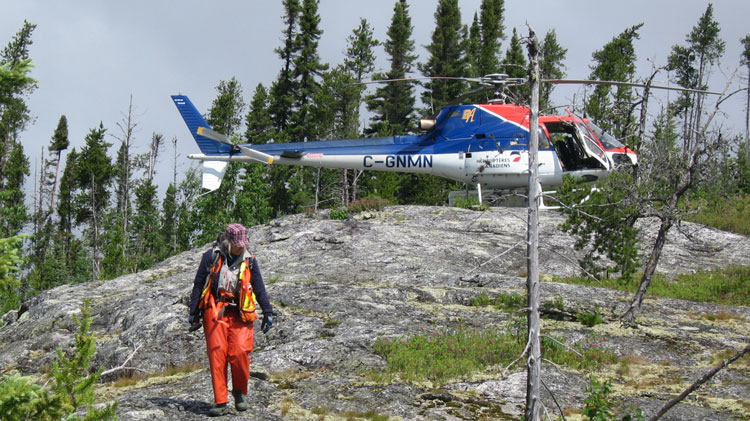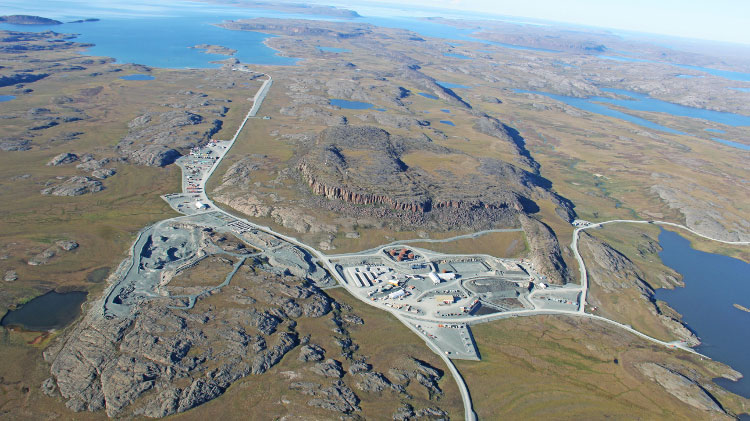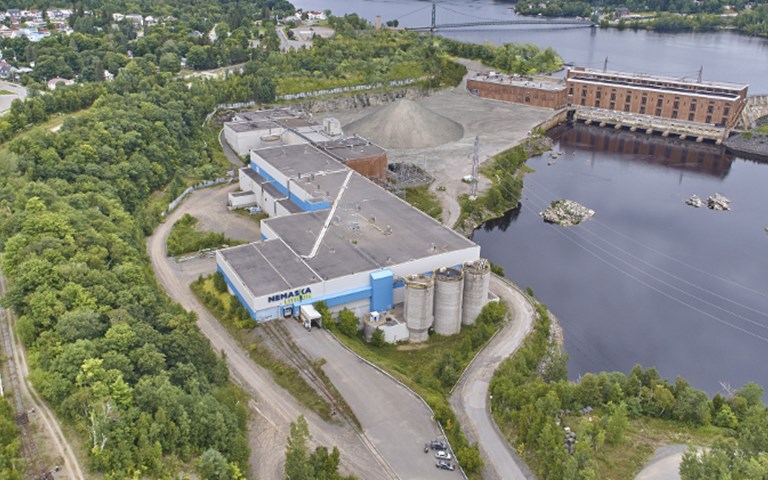Nemaska Lithium claims its Quebec mine will be the second-largest lithium reserve in the world, and expects production to begin in 2018. Courtesy of Nemaska Lithium
The lithium markets and industry have been growing, spurred by the growth of the electric car market, according to PricewaterhouseCoopers’ (PwC) Mine 2016 annual report on the industry, published in early June.
Lithium is one of only two commodities – gold being the second – whose prices have survived the global downturn, the report said.
“Lithium has experienced unprecedented demand over the past year due to its widespread application in batteries,” and especially in electric car batteries, noted the report.
Electric car manufacturer Tesla Motors, currently constructing a battery factory in Nevada, expects to produce as many lithium-ion batteries from that location in 2020 as were produced worldwide in 2013. Meanwhile, nearly every major carmaker has begun marketing electric vehicles, and 2015 saw an 80 per cent increase in sales over the year before.
Tesla has stated that it believes there will be enough lithium supply to build the batteries it needs, but some analysts worry lithium producers will struggle to supply the commodity.
Today, however, Tesla’s brand is far more noteworthy than its lithium appetite. “From a lithium demand standpoint, Tesla is not significant – right now. Based on last year’s production, they’re less than two per cent of the lithium market,” said Joe Lowry, president of consulting firm Global Lithium.
Batteries used to store energy from renewable sources, like wind and solar power, will add to the demand for lithium and lithium batteries, Lowry said. Lithium is also used in ceramics, glass and air conditioners.
This is not the first time Lowry has seen a groundswell of interest in lithium; interest also spiked in the late 2000s, when electric and hybrid-electric vehicles began to make a mark on the market. While that wave of interest was premature, he said, “I see this as kind of a second coming, only this time it’s real.”
The price for lithium carbonate, one of the major types of lithium used in batteries, increased 400 per cent in the last two years to a yearly average of $6,400 per tonne in 2015, according to the U.S. Geological Survey’s (USGS) 2016 lithium outlook. For the first time, a lithium company broke into PwC’s Top 40 mining companies by market capitalisation. Deutsche Bank has forecasted the lithium supply will triple over the next decade.
Reports indicate Tesla may need about 24,000 tonnes of lithium to have enough batteries to produce half a million cars by 2018. However, only 32,500 tonnes were produced worldwide in 2015, according to data from the USGS.
Increasing production
Most of the world’s lithium supply is produced by three companies: FMC Corp., Sociedad Quimica y Minera de Chile (SQM) and the Albemarle Corporation.
SQM’s CEO Patricio de Solminihac said in a 2015 interview with Benchmark Mineral Intelligence that the company could increase production within 12 months, if necessary, to meet higher demand.
FMC and Albemarle have decided not to wait. FMC announced in May it would triple its production of lithium hydroxide by 2019, increasing to 30,000 tonnes from 10,000. Albemarle also announced it would be increasing production of lithium carbonate to 70,000 tonnes from 24,000 over 27 years.
The majors are not the only ones capitalizing on the lithium rush. Tesla secured deals to buy lithium from a few junior companies, including Canada-based Pure Energy Minerals and Bacanora Minerals.
Neither have mines in production, but others are coming online – especially in South America. Argentina, Bolivia, and Chile are the true lithium powerhouses. Of about 34 million tonnes of identified lithium resources around the world, these three countries account for the majority. But Canada – and Quebec in particular – may become another lithium hotbed.
Canada has about one million tonnes of identified lithium resources, according to data from the USGS. One project in Quebec is getting closer to production: Nemaska Lithium, which closed a $69-million public offering and began trading on the TSX on July 8.
“The world needs a couple of newcomers to the market, as soon as possible,” said Nemaska President and CEO Guy Bourassa, “and we’re one of them.” Nemaska claims its mine will be on the second-largest reserve in the world.
“We’re also one of three projects around the world that are currently fully permitted and ready to build,” Bourassa added, estimating that similar projects in Canada are probably five to seven years behind Nemaska’s. Bourassa said he expects production will begin in 2018. The most recent feasibility study for the project estimated the mine would produce about 213,000 tonnes of concentrate per year, which would become about 27,500 tonnes of lithium hydroxide and 3,245 tonnes of lithium carbonate. Both are often used as cathodes – the positive end of a battery.
Looking ahead
There is the possibility that the supply of other components of a lithium-ion battery may be in jeopardy – particularly cobalt, most of which comes from mines in countries not known for their political stability.
Lowry does not share those concerns. “I don’t think cobalt, long-term, is going to be something that stops the story,” he said, citing recycled cobalt, the relatively large markets for both nickel and cobalt, and the push to develop cobalt-free cathodes.
There remains the potential for other projects in the future to threaten the dominance of the lithium-ion battery – an issue alluded to in the PwC report. But Bourassa is not worried.
“Nobody sees a replacement for at least 15 or 20 years from now,” he said. “What we see is the evolution of lithium-ion batteries with new chemistries: more cycles, higher power density, more safety, less heat generated. But they’re all lithium-ion batteries at the end of the day.”




